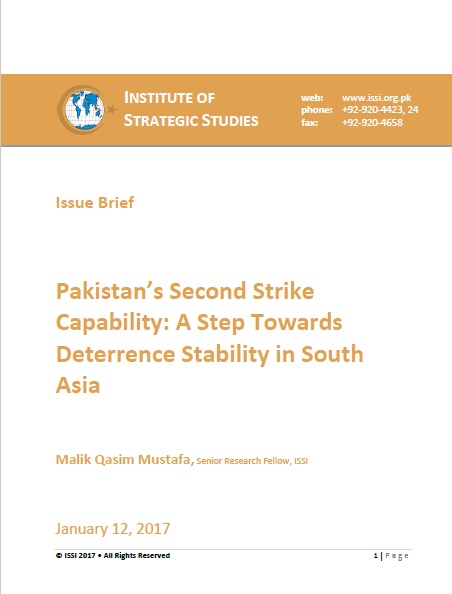Developing a nuclear triad capability is one of the key components for a responsible nuclear weapon state like Pakistan to enhance the stability of its deterrent relationship vis-a-vis its larger adversary, India. India is not only pursuing an active nuclear and missile development programmes and Ballistic Missile Defence (BMD) programme, but it is also modernising and expanding its conventional forces. From its conventional war fighting doctrines to the development of sea-based nuclear capability, coupled with its vague No-First Use (NFU) policy, all these actions have destabilised regional strategic balance time and again. To ensure its survival against Indian intentions and actions, Pakistan has been left with no choice except to counter India with a credible minimum deterrent posture at all spectrums of any conflict. In response to the Indian naval nuclear capability, the development of a Pakistan’s sea-based nuclear capability was inevitable and by avoiding a nuclear arms race, Pakistan only aimed at developing a credible second strike capability.
On January 9, 2017 after conducting the first successful test of Babur-3, a Submarine Launched Cruise Missile (SLCM), Pakistan completed the last leg of its nuclear triad. According to the Inter Services Public Relations (ISPR) press release, with a range of 450 kilometres, Babur-3 is a sea-based variant of Ground Launched Cruise Missile (GLCM) Babur-2, which was successfully tested in December 2016. The ISPR further adds that “Babur-3 incorporates state of the art technologies including underwater controlled propulsion and advanced guidance and navigation features, duly augmented by Global Navigation, Terrain and Scene Matching Systems.” Babur-3 also incorporates certain stealth technologies, terrain hugging and sea skimming flight capabilities, and can carry various types of payloads.
















